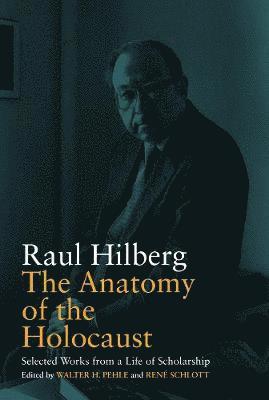
- Format
- Häftad (Paperback / softback)
- Språk
- Engelska
- Antal sidor
- 258
- Utgivningsdatum
- 2019-11-07
- Förlag
- Berghahn Books
- Medarbetare
- Hilberg, Raul (ed.), Pehle, Walter H. (ed.), Schlott, Ren (ed.)
- Illustrationer
- Black & white illustrations
- Dimensioner
- 216 x 140 x 14 mm
- Vikt
- Antal komponenter
- 1
- Komponenter
- 422:B&W 5.5 x 8.5 in or 216 x 140 mm (Demy 8vo) Perfect Bound on White w/Matte Lam
- ISBN
- 9781789204896
- 304 g
The Anatomy of the Holocaust
Selected Works from a Life of Scholarship
- Skickas från oss inom 3-6 vardagar.
- Fri frakt över 249 kr för privatkunder i Sverige.
Passar bra ihop
De som köpt den här boken har ofta också köpt Once Upon A Broken Heart av Stephanie Garber (häftad).
Köp båda 2 för 645 krKundrecensioner
Fler böcker av författarna
-
Perpetrators Victims Bystanders
Raul Hilberg
-
The Destruction of the European Jews
Raul Hilberg
-
The Warsaw Diary of Adam Czerniakow
Raul Hilberg, Stanislaw Staron, Josef Kermisz
-
The Politics of Memory
Raul Hilberg
Recensioner i media
This book is written in a concise and factual narrative style, with an absence of any judgement or emotionI would recommend this book to both Holocaust historians and general readers alike. The breadth and depth of Hilbergs research and his particular insights have not yet been surpassed by any other Holocaust scholar. Jewish Libraries News & Reviews With this compilation of essays and recollections, we [] once again come to know Hilberg as an immensely productive, curious and innovative historian. Sddeutsche Zeitung A volume of great humanity. Die Tageszeitung [Hilberg was] undoubtedly the most important pioneer in the field of perpetrator research, all of whose topics and controversies he anticipated in their essence. H-Soz-Kult
Övrig information
Raul Hilberg (1926-2007) was the founding scholar of Holocaust studies in the United States and the author of numerous publications, including the classic The Destruction of the European Jews. He taught political science at the University of Vermont from 1955 to 1991.
Innehållsförteckning
Introduction Walter H. Pehle and Ren Schlott Chapter 1. The Anatomy of the Holocaust Chapter 2. German Motivations for the Destruction of the Jews Chapter 3. The Bureaucracy of Annihilation Chapter 4. The Significance of the Holocaust Chapter 5. Incompleteness in Holocaust Historiography Chapter 6. Bitburg as Symbol Chapter 7. The Ghetto as a Form of Government Chapter 8. The Judenrat: Conscious or Unconscious Tool Chapter 9. I Was Not There Chapter 10. The Holocaust Mission: July 29 to August 12, 1979 Chapter 11. In Search of the Special Trains Chapter 12. Working on the Holocaust Chapter 13. The Development of Holocaust Research: A Personal Overview Index
Du kanske gillar
-
The Republic
Plato
Häftad -
Social Psychology
Tom Gilovich, Dacher Keltner, Serena Chen, Richard E Nisbett
Mixed media product -
Meditations
Marcus Aurelius
Häftad


